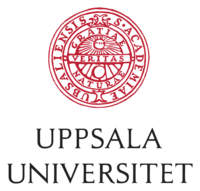Team:Uppsala-Sweden/UU
From 2011.igem.org
(→Uppsala University) |
(→Uppsala University) |
||
| Line 59: | Line 59: | ||
[[Image:UUlogo.png|200px|left|Uppsala University]] | [[Image:UUlogo.png|200px|left|Uppsala University]] | ||
| - | + | Uppsala University (Swedish: Uppsala universitet) is a research university in Uppsala, Sweden, and is the oldest university in Scandinavia, founded in 1477.It consistently ranks among the best universities in Northern Europe in international rankings and is generally considered one of the most prestigious institutions of higher learning in Europe. | |
The university rose to pronounced significance during the rise of Sweden as a great power at the end of the 16th century and was then given a relative financial stability with the large donation of King Gustavus Adolphus in the early 17th century. Uppsala also has an important historical place in Swedish national culture, identity and for the Swedish establishment: in historiography, literature, politics, and music. Many aspects of Swedish academic culture in general, such as the white student cap, originated in Uppsala. It shares some peculiarities, such as the student nation system, with Lund University and the University of Helsinki. | The university rose to pronounced significance during the rise of Sweden as a great power at the end of the 16th century and was then given a relative financial stability with the large donation of King Gustavus Adolphus in the early 17th century. Uppsala also has an important historical place in Swedish national culture, identity and for the Swedish establishment: in historiography, literature, politics, and music. Many aspects of Swedish academic culture in general, such as the white student cap, originated in Uppsala. It shares some peculiarities, such as the student nation system, with Lund University and the University of Helsinki. | ||
Revision as of 13:01, 19 July 2011
Welcome to Uppsala-SwedeniEM '2011
Uppsala University
Uppsala University (Swedish: Uppsala universitet) is a research university in Uppsala, Sweden, and is the oldest university in Scandinavia, founded in 1477.It consistently ranks among the best universities in Northern Europe in international rankings and is generally considered one of the most prestigious institutions of higher learning in Europe.
The university rose to pronounced significance during the rise of Sweden as a great power at the end of the 16th century and was then given a relative financial stability with the large donation of King Gustavus Adolphus in the early 17th century. Uppsala also has an important historical place in Swedish national culture, identity and for the Swedish establishment: in historiography, literature, politics, and music. Many aspects of Swedish academic culture in general, such as the white student cap, originated in Uppsala. It shares some peculiarities, such as the student nation system, with Lund University and the University of Helsinki.
Uppsala belongs to the Coimbra Group of European universities. The university has nine faculties distributed over three 'disciplinary domains'. It has about 20 000 full-time students, and about 2,000 doctoral students. It has a teaching staff of 4,000 (part-time and full-time) out of a total of 6,000 employees. Of its annual turnover of around 4.3 billion SEK (approx. 715 million USD), approximately 60% goes to graduate studies and research.
Architecturally, Uppsala University has traditionally had a strong presence in the area around the cathedral on the western side of the River Fyris. Despite some more contemporary building developments further away from the centre, Uppsala's historic centre continues to be dominated by the presence of the university.


Department of Cell and Molecular Biology
We would like to thank the Department of Cell and Molecular Biology in Uppsala, specially Professors Anders Virtanen and Anthony C. Forster from Chemical Biology and Molecular biology lab respectively providing us access to his lab and letting us use the equipment and resources necessary for our project.
Department of Medical Biochemistry and Microbiology
We also want to thank the Department of Medical Biochemistry and Microbiology in Uppsala to providing the active instructor Erik Gullberg.
 "
"
